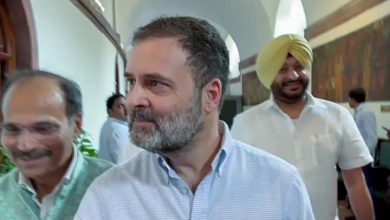
New Delhi: The Central Bureau of Investigation (CBI) has registered three separate FIRs besides also launching a preliminary enquiry to probe alleged irregularities in Indian Airlines-Air India merger and purchase of 111 aircraft, leasing of planes and giving-up of profit-making routes by Air India. These decisions, according to the CBI, caused a loss of thousands of crores to the exchequer.
While the CBI is obviously acting at the behest of the Centre and some may term this probe as a witch hunt against UPA’s Civil Aviation Minister Praful Patel, it is a fact that the decision to merge erstwhile Air India and Indian Airlines was taken for all the wrong reasons by the UPA worthies.
In fact, the entire decision making process which lead to this ill fated merger shows there was a failure at several layers of the government of the day. Make no mistake: Patel was not the sole promoter of this idea. As per a report of the Comptroller & Auditor General (CAG) of 2011, the merger process was examined in all aspects at various levels – by the Consultant (Accenture), the Ministry of Civil Aviation, the Minister of Civil Aviation, a Committee of Secretaries, a Group of Ministers (GoM) and the Cabinet. This was, thus, a collective decision, arrived at after multiple levels of due diligence. Hence, it wouldn’t be wrong to call it a collective failure of the government of the day.
But why is everyone trying to find faults with a decision which was implemented a decade back, now? For one, the merged entity – the Air India of today – has never ever reported a net profit in its decade long existence while the separate airlines were profitable.
This piece in Economic Times examines why the merger of the two airlines created a loss making one. Between 2001 and 2006-07, the standalone Air India declared a profit each year!
And in this piece in Business Today, former Civil Aviation Minister Rajiv Pratap Rudy quotes Accenture report which had highlighted two factors for the sub-optimal performance of the two erstwhile airlines: an ageing fleet and the fact that the two existed individually.
The report had gone on to say that merger of the two entities and replacement of the ageing fleet would result in a profit of Rs 1,000 crore in the first year itself. “Instead, in the three years following the merger in 2007 we have seen losses escalate from Rs 1,200 crore in the first to Rs 2,600 crore in the second to Rs 5,500 crore in the third.”
Now that uncomfortable questions are being raised about the need for the Indian taxpayer to continuously fund this loss making behemoth, the government wants to exit Air India. Perhaps by calling into question the inefficiencies of the previous regime, the NDA government may be able to deflect some of the criticism coming its way for continued bumbling on Air India!
Secondly, the merged entity has seen its market share slide to a shadow of its former self, when it ruled the Indian skies, as better and far more efficient private airlines have nudged Air India to the margins of the industry. And third, the entire process of so-called integration of the two erstwhile airlines was handled in such an inept fashion that it took several years to be completed, even on paper. In reality, many employees within the airline still refer to themselves as Indian Airlines’ employees and see themselves as distinct from the merged entity– making it evident that though on paper the merger has been achieved now, it has not been accepted by all. And this is almost a decade after the merger was completed on paper!
It is obvious then that the merger was suggested and pushed through for all the wrong reasons. Today, India is supporting an airline which had already received upwards of Rs 25,000 crore of public money but is yet to turn the corner; it is slated to receive an equal amount more, over the next few years, despite a financial turnaround which is nowhere in sight. Was the merger the trigger for Air India’s present state and had it not happened, would the two airlines have fared better? The answer to the first part of the question is a resounding yes.
Let’s look at the scathing observations the Comptroller and Auditor General (CAG) made in 2011 about this ill fated merger:
1) Inexplicably, synergised / integrated operation between AIL and IAL (even though this was recommended / recognised in 2004) was not factored in as part of the acquisition project analysis either for AIL or IAL. The initiation of action towards the merger in March 2006, less than a few months after completion of independent large scale acquisition of aircrafts by IAL (Airbus) and AIL (Boeing) in late 2005 (after long drawn out procedures/ negotiations) appears somewhat ill-timed, with loss of significant synergistic opportunities.
Had the possibility of merger (with attendant route rationalisation, network integration, common maintenance/ overhauling facilities and other synergies) been considered – even at a late stage – in the process of fleet acquisition, the underlying economics could have been significantly altered; perhaps, even a common acquisition process for AIL/ IAL could well have been considered. In our view, the potential benefits for the merger would have been far higher, had this been undertaken before finalization of the massive and separate fleet acquisition exercises undertaken by AIL and IAL. This is what CBI wants to probe – the massive fleet acquisition by the two airlines which resulted in insurmountable debt. This has been drowning the merged entity ever since.
2) The financial case for the merger was not adequately validated prior to the merger. Detailed item-wise financial analysis was not available, so as to assess the reasonableness and robustness of the projected benefits (on account of revenue synergies and cost and capital productivity synergies). The proposed revaluation of fixed assets had no operational or cash flow benefits.
3) There were huge delays in actualisation of the merger/ operational integration. The single code passenger reservation system (which was a critical element in network integration) was activated only in February 2011.
4) HR factors in any merger process are the most complicated. Even in March 2006, apprehensions with regard to HR problems due to a potential merger were expressed. HR integration below the level of DGM, representing 98 percent of the staff, has still not taken place. The CAG made these observations in 2011, four years after the merger had been completed on paper.
5) The Memorandum of Understanding (MoUs) signed between the erstwhile IAL and AIL and MoCA was flawed. The non-financial parameters included in the MoU included minor or insignificant parameters or gave undue weightage to such parameters, at the cost of critical traffic and operating parameters in the airline industry (such as those being monitored by Directorate General of Civil Aviation). This skewed the MoU ratings of IAL and AIL unduly to present a “rosy” picture of performance. The overall combination of financial and non-financial parameters devised for the MoUs were such as to ensure that the MoUs became a meaningless exercise, rarely (if ever) reflecting poor performance, and ensuring lack of effective accountability for all parties concerned.
There are a number of explanations the UPA government and its functionaries owe about their handling of Air India. But even the present government is not covering itself with glory – its handling of the merged entity has also been inept. The sooner a disinvestment is initiated, the better it will be for the airline.







